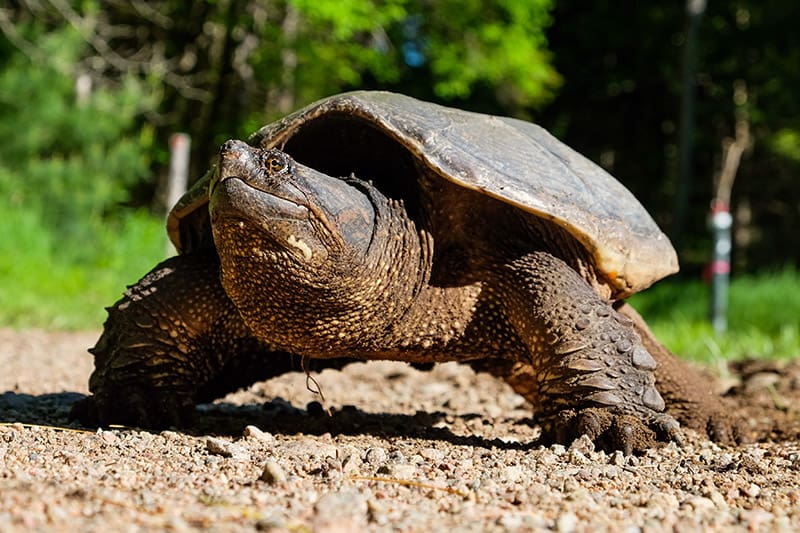The pugnacious attitude of the Snapping Turtles makes them great feeders, and therefore healthy resilient captives!
Though Snapping Turtles are aggressive, these feisty little beasts are hardy. They are good captives because they are cold tolerant, will eat a variety of food, and are very hardy when kept in the proper enclosure. Those hobbyists keeping them are successfully breeding them. As they are aggressive turtles, they will often strike out viciously at their keepers and will definitely kill and eat any creature kept with them, often even other snapping turtles. They are best kept individually and admired as prehistoric-looking, wonderful beasts and not pets to be held or coddled.
Snapping Turtles do get much larger than most keepers can manage. Once they get too large, they are often offered to local zoos (which have no room for these large, aggressive turtles) or they are released into the local lake or waterway. This is, of course, a HUGE mistake. Unwanted specimens should be offered to a local turtle club or adoption group and NOT be released into nature.
- For more information see: Selecting and Caring for Your Turtle or Tortoise
Scientific Classification
| Kingdom: | Animalia |
| Phylum: | Chordata |
| Class: | Reptilia |
| Order: | Testudines |
| Family: | Chelydridae |
| Genus: | Chelydra |
| Species: | serpentina |
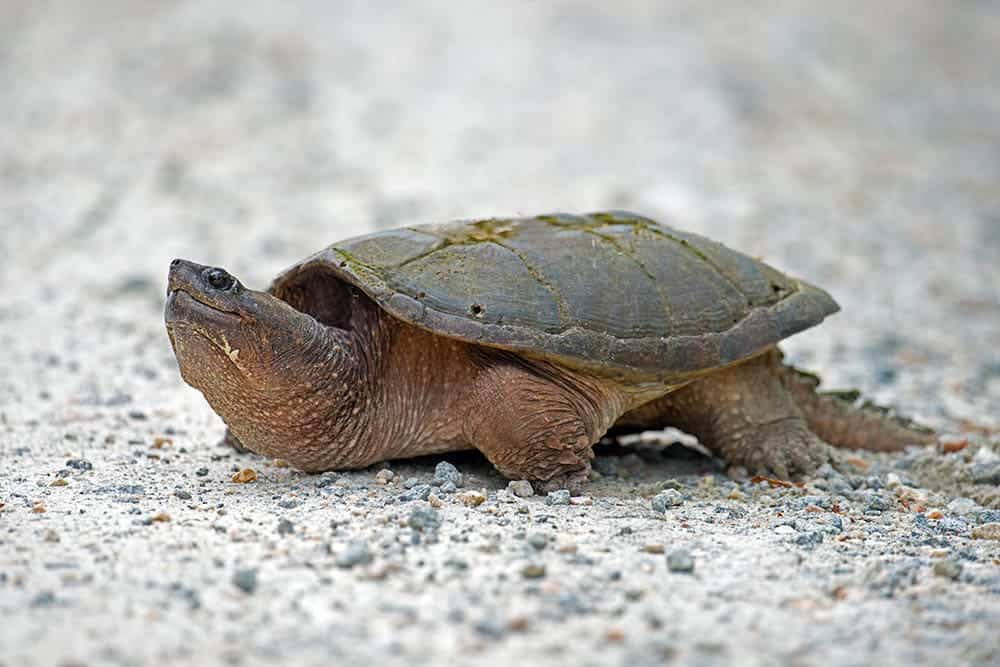
Distribution
The turtles described here comprise the genera known as Chelydra. There are four subspecies of Chelydra serpentina found from Canada southeast to Florida and south to Mexico and Central America.
- Common Snapping Turtle Chelydra serpentina serpentina
- Florida Snapping Turtle Chelydra serpentina osceola
- Mexican Snapping Turtle Chelydra serpentina rossignoni
- Northern Common Snapping Turtle Chelydra serpentina acutirostris
These turtles belong to the family Chelydridae along with the Alligator Snapping Turtle Macrochelys temminckii.
Some other turtles closely aligned with the snapping turtles are the Big-headed Turtles in the genera Platysternon, which has 5 subspecies. Exact taxonomical placement of these turtles has been the subject of some controversy over the years. Sometimes they are placed in the Chelydridae family, but they are also sometimes placed in their own separate family, the Platysternidae.
Status
These turtles are not listed on the IUCN Red List.
Description
Common Snapping Turtles are easily recognizable by even the most novice keepers. They can vary in color from browns, blacks, and even cream (leucistic or hypomelanistic specimens). They have rough shells with peaks and ridges. Their heads are large with muscular jaws and sharp, pointed beaks. They also have a long muscular tail. Chelydra reach an adult size of 18″ (45 cm) with males slightly larger than females.
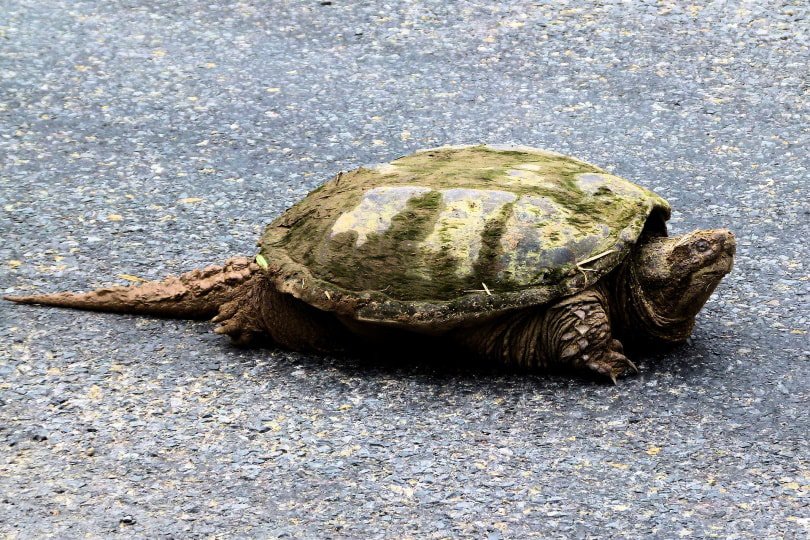
Care and Feeding
Snapping turtles are omnivorous in nature, feeding on a wide variety of live prey and also eating floating aquatic vegetation. In captivity, they feed aggressively on fish, worms, and crayfish, and will eat floating commercial pellets as hatchlings, juveniles, and adults. They eat so well, in fact, that they can become quite overweight in captivity. By not overfeeding them, and by keeping their cage decorations complex and giving them large enclosures, keepers can keep their snappers healthy and happy.
Environment
Common Snappers are great display animals in large enclosures. They do very well in outdoor ponds. They will, however, eat any creature, including other turtles and so they are not a good choice for an outdoor community pond. They are not particularly picky about water quality, pH, or decorations, but using driftwood and aquatic plants will provide a naturalistic environment for them. Some creativity in the enclosure can provide them with exercise that is very important for captive Snapping Turtles.
Indoors, a basic setup using a large tub or stock tank will be sufficient to hold a medium to large adult. Add an efficient filtration system as they are messy eaters, consuming a lot of high protein food. A shop light fixture with UVB-emitting bulbs and a 100-watt spotlight should be mounted above one end. Common Snapping Turtles rarely bask (they tend to wander on land rather than bask), but we suggest adding the basking spot in case the turtles would like to climb up and dry out a little. Add a variety of floating and submerged aquatic plants to the snapping turtle enclosure. In addition to helping keep the water clean and healthy, plants will add some variety to their diet.
Care must be taken that these, and any turtles, are not released into a wild habitat. The reasons are many. The introduction of non-native species can lead to the introduction of diseases and can lead to hybridization of introduced and native species. In addition, many turtles raised in captivity and released into wild situations are confused, unable to cope with extreme weather changes, and many surely fall prey quite quickly to the wary predators they may encounter.
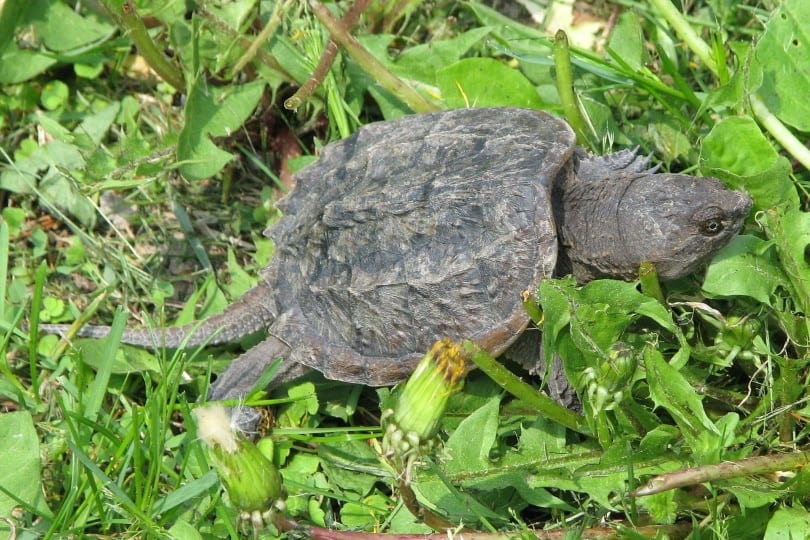
Handling
Captive-hatched specimens, as always, are the best to keep as pets but these turtles are quite aggressive. They will often strike out viciously at their keepers and will definitely kill and eat any creature kept with them. They are best kept individually and admired as prehistoric-looking, wonderful beasts and not pets to be held or coddled.
Breeding
Breeding in Common Snapping Turtles is aggressive, but simple. The change from a cool winter to a warm spring and summer is their trigger. Snapping Turtles are typically quite prolific and they tend to copulate under a variety of conditions. Disturbances don’t throw them off task, unlike their cousin the Alligator Snapping Turtle, which is very shy and will leave both copulation and egg-laying if even slightly disturbed.
The ideal breeding conditions indoors are to keep the male and female in separate enclosures until breeding time in the early spring. If kept together, they can be hostile, especially during feeding and they can injure each other with their powerful jaws. Seasonal fluctuation from a cool winter to warm spring and summer is an important trigger for most snapping turtle reproduction.
Female Common Snapping Turtles have a strong egg-laying instinct and will even climb out of a fully aquatic enclosure to lay their eggs. Females have been known to walk up wooden planks from an above ground pool to find the right laying conditions. In an outdoor pond situation, snapping turtles have reproduced well. They typically lay clutches of 10-15 eggs that hatch in 80-85 days at 82 F (28 C). They have a high rate of fertility and a large percentage of the eggs hatch, producing healthy, vigorous babies.
Babies are shy when handled, but do very well and grow rapidly. They feed aggressively on a multitude of food items, including both live and commercially prepared foods. They are especially fond of guppies and redworms.
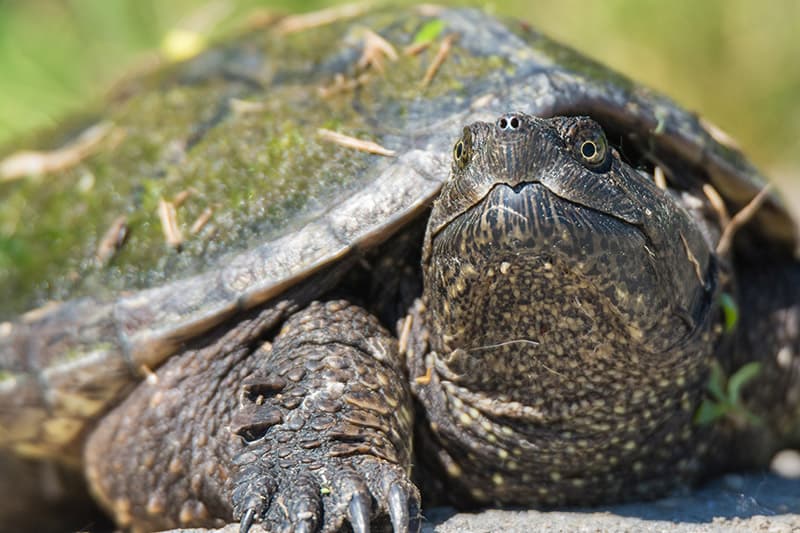
Ailments / Health Problems
None are common in Snapping Turtles kept singly. However, if kept with others injuries from fighting are fairly common, especially in cramped conditions. Young snapping turtles with missing tail tips are often encountered. Captive-raised specimens exhibiting shell deformities, such as “curling”, is due to an improper diet.
Captive Snapping Turtles are often overweight. Captivity-related obesity affects the kidneys and liver, and often leads to premature death. This obesity results from a diet too high in fat and protein, overfeeding, and cramped captive conditions.
Availability
Snapping turtles are available from a variety of sources such as better pet stores and breeders at the larger reptile shows across the country.
A new keeper should try to find specimens that are captive-hatched and at least three months old to ensure the turtle has been feeding well and is well on its way to a strong start. As they are produced in huge numbers by breeders in Florida (C. s. osceola) and from one breeder in Iowa (C. s. serpentina), captive-hatched specimens are accessible.
Featured Image Credit: Tyler Clemons, Shutterstock
